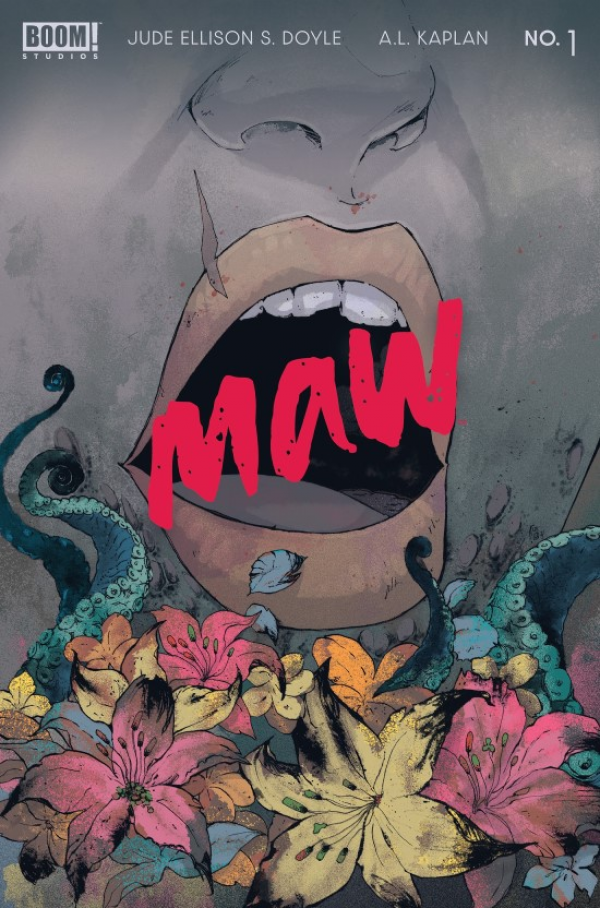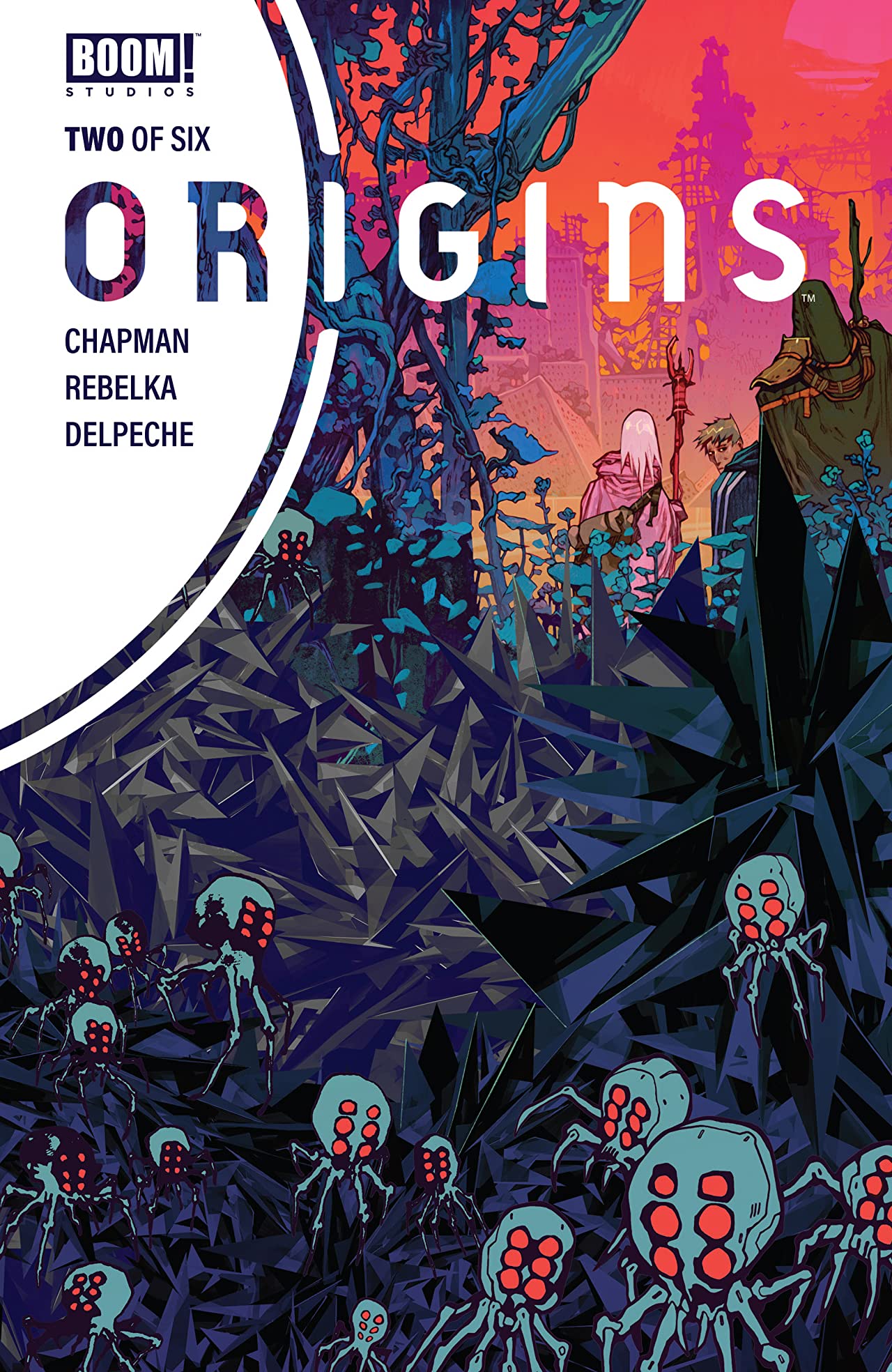Maw #1
Jude Ellison S. Doyle, Story
A.L. Kaplan, Illustrator
Fabiana Mascolo, Colors
Ariela Kristantina, Cover
Cardinal Rae, Letters
Recap
The issue begins, Wendy and her sister, Marion, travel to a rural area to participate in a mystic outing. A conversation between Wendy, Marion, and their driver informs the reader of the keynote speaker, Diana Spiro, a feminist author. After reaching their destination, however, Marion reconnects with the driver and catches a ride back to a local tavern to get a break. Meanwhile, Wendy gets acclimated and learns about the layout of the camp, and meets the leader. Back at the tavern, Marion is sexually assaulted by a man who drugs her drink. She is brought back to the camp after the assault. The horrific event triggers strong feelings of guilt in Wendy who states that her intention in bringing Marion to the camp was to keep her safe. We learn through a flashback sequence that Wendy is a survivor of a previous rape. The story flushes out the injustice in legal response to the sister’s previous assault as well as the unhealed wounds of her past.
The most impactful art panel in the book depicts the supreme court building in DC along with the American flag in black and white. The colors on the American flag are symbolic, red symbolizes hardiness and valor, white symbolizes purity and innocence, and blue represents vigilance, perseverance, and justice. The fact that the panels are black and white is noteworthy. The painful irony is that the sister’s experiences have taught her that the law lacks valor, purity, innocence, and vigilance. The art depicts Marion’s traumatized demeanor and the angry emotions of her sister. There is a sense of betrayal, loss, and desperation felt by Marion as a result of being assaulted and the absence of justice she experienced.
Marion wrestles with her response to the latest assault. Wendy implores her to contact the police but Marion does not believe that it will do any good. The sequence is a reminder of a familiar story in the United States. Women and girls are sexually molested, assaulted, and raped and the abusers are free to abuse again. Systemic problems and a misogynistic society that devalues women are to blame. Survivors and their loved ones often carry the consequence of feeling shame and blame on top of the physical scars that remain. This story is brutally and cleanly left bare of unneeded fluff forcing the reader to sit with these painful truths. It is impactful.
The story is embedded within the context of mysticism. Wendy is “a great witch” and the activities and routines Wendy learned about the camp earlier in the story point to a world that will flush out as the story progresses. This story does not appear, at first glance, to be a normal Wiccan witch looking for revenge. The details around the abuse and the lack of justice flush out emotions while it sits in the lonely places that survivors experience and feel. It sits in the reader’s bones, as well. However, the fact that Wendy has powers gives hope to what might be flushed out; not just angry revenge but something more transformative. The line that is repeated at the camp, “Every Woman has their own power”, rings in the reader’s ears as the story progresses. The story ends with another line, “We wouldn’t see home again.” I’m curious to see what this means for these characters and am convinced that I do not know right now. Overall 9.5/10











